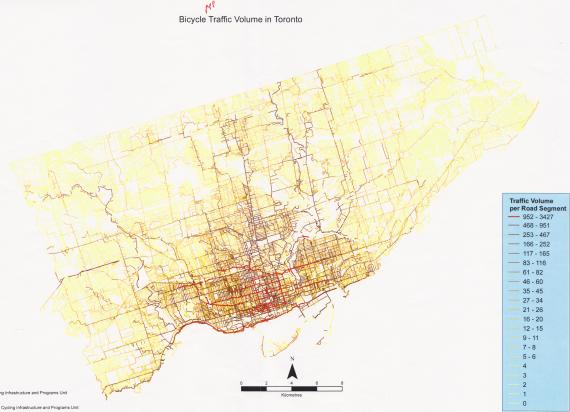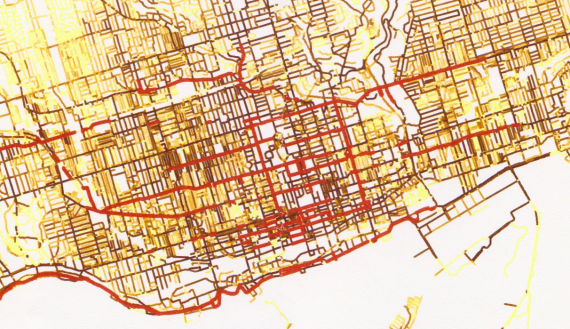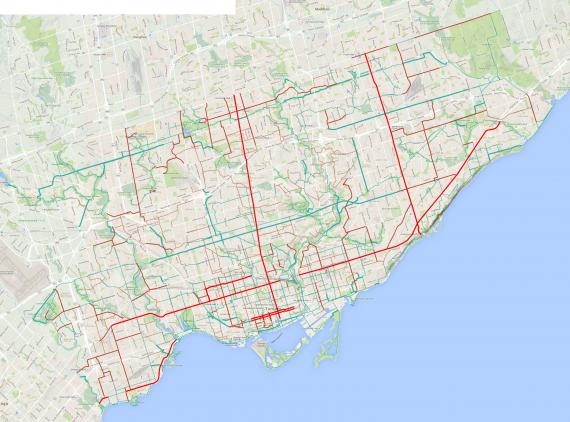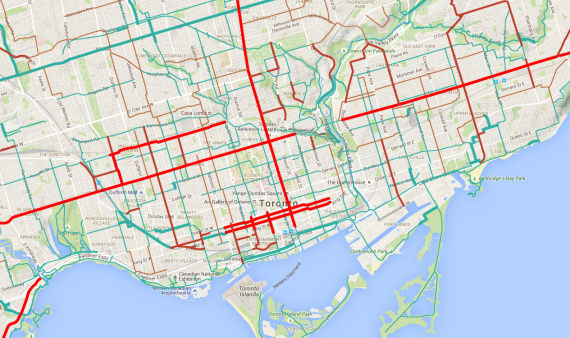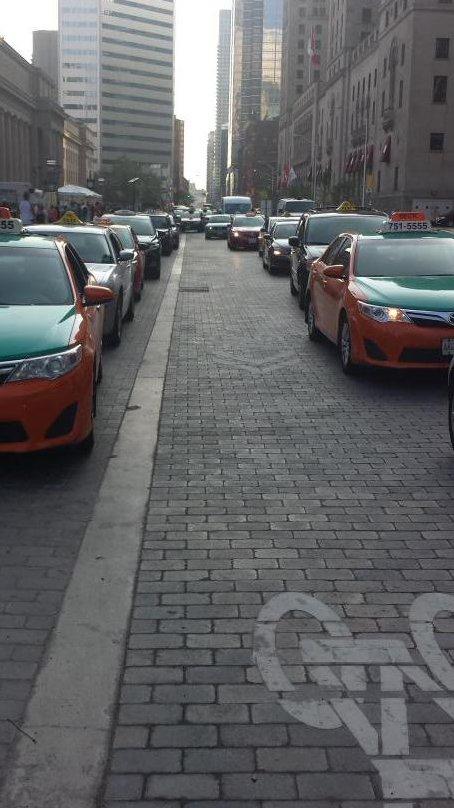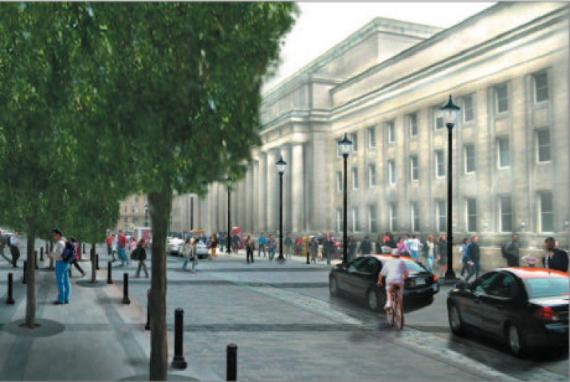The Cycling Unit at the City of Toronto has been collecting data of people's cycling routes. They've been collecting it via a phone app that collects GPS data while cycling. I recently got a copy of the City's preliminary map of cycling densities from that app thanks to John Taranu.
The City Core is interesting (we already know that the suburban cycling volumes are low). I'm going to assume that a lot of the people using the app were probably the less casual type; they're more passionate about cycling. They probably used the app mostly on their work commutes. Given that, it looks like that from the east most commutes are channelled into Danforth or Dundas East. From the west people end up skipping Bloor and going down to College, Harbord or Dundas. Or all the way down to Queen and then Adelaide/Richmond.
It makes me think that getting cycle tracks on Adelaide and Richmond was a huge win. Probably the biggest in the last couple decades. And I will say arguably, more important than Bloor bike lanes.
Next let's look at another map. This is from the recent survey of draft proposed routes from the City's ten year bike plan. Thanks again to John Taranu, this time for combining the two maps the Cycling Unit staff presented in the survey.
It's unfortunate that they decided to use the same green line regardless of whether it's a bike lane, cycle track or just a "signed route". The narrow green line means it's already installed; wide green that it's approved. The red lines are proposed and are more likely to be included in the bike plan.
There are some nice solid additions, including Bloor, Yonge and Kingston Road. But again looking at the core shows that despite having by far the highest volume of cyclists in the city that staff have decided to wimp out and do little. Sure we'll get Bloor and an extension of the Railpath (but not plowed in winter), but looking at the traffic volume map and it shows that all the cyclists on College, Dundas or the ones trying to connect to the new cycle tracks on Richmond and Adelaide will get next to no relief. Parkdale and further west is mostly out of luck.
Staff are taking the politically expedient route by ignoring the gaps on College in particular. College has the highest cycling traffic volumes in Toronto! College was one of the first to get bike lanes but looks like we'll have to wait at least another decade before anything improves there. For shame.
Is it wrong to think that we should be prioritizing where people are already cycling and making it safer and more enjoyable for them?

